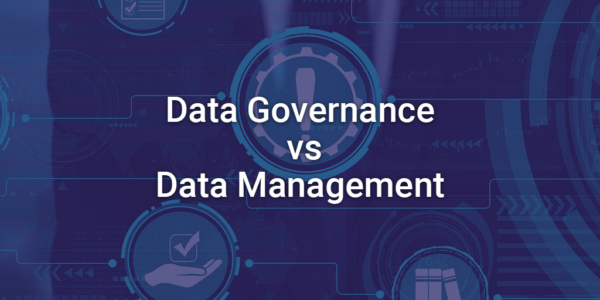Data Management Vs Data Governance: 5 Things You Should Know About

In the age of information overload, businesses are constantly seeking efficient ways to harness the power of data. Two terms that often emerge in this quest are “Data Management” and “Data Governance.” While they might sound similar, they represent distinct concepts with unique roles in ensuring data quality, security, and usability within organizations. Understanding the differences between them is crucial for businesses aiming to maximize the value of their data assets. In this blog post, we’ll delve into Data Management and Data Governance, highlighting five key differentiators to help you navigate this complex landscape.
- Definition and Scope:
- Data Management: Data Management encompasses the processes, policies, and technologies used to acquire, store, organize, and retrieve data efficiently. It focuses on the entire data lifecycle, from creation to disposal, and aims to ensure data integrity, accessibility, and reliability. Data Management activities include data collection, cleansing, integration, storage, and analysis.
- Data Governance: Data Governance, on the other hand, deals with the overall management of data assets to ensure data quality, compliance, and security. It involves defining and enforcing policies, standards, and procedures for data usage, access, and control. Data Governance sets guidelines for data usage, establishes accountability, and aligns data initiatives with business objectives.
2. Objectives:
- Data Management: The primary goal of Data Management is to optimize data assets for operational efficiency and decision-making. It focuses on improving data quality, reducing redundancy, and enhancing data accessibility to support various business functions such as analytics, reporting, and strategic planning.
- Data Governance: Data Governance aims to establish a framework for responsible data stewardship within an organization. It seeks to ensure that data is used ethically, securely, and in compliance with regulatory requirements. By promoting data transparency and accountability, Data Governance mitigates risks associated with data misuse, breaches, or regulatory non-compliance.
3. Roles and Responsibilities:
- Data Management: Data Management roles typically include data architects, database administrators, data analysts, and data engineers. These professionals are responsible for implementing data storage solutions, designing data models, developing data pipelines, and maintaining data infrastructure.
- Data Governance: Data Governance involves roles such as data stewards, data officers, and compliance managers. These individuals are tasked with defining data policies, establishing data standards, and overseeing data governance initiatives across the organization. They ensure that data assets are managed in accordance with legal, regulatory, and ethical guidelines
4. Implementation Approach:
- Data Management: Data Management initiatives often focus on implementing technologies and tools for data storage, integration, and analysis. Organizations invest in databases, data warehouses, ETL (Extract, Transform, Load) tools, and BI (Business Intelligence) platforms to support their data management objectives.
- Data Governance: Implementing Data Governance requires a combination of people, processes, and technologies. It involves creating governance frameworks, establishing data governance councils, and deploying governance tools for data classification, access control, and policy enforcement. Collaboration across departments is essential for successful Data Governance implementation.
5. Measuring Success:
- Data Management: Success in Data Management is measured by metrics such as data accuracy, completeness, and timeliness. Organizations track KPIs (Key Performance Indicators) related to data quality, storage efficiency, and data integration to assess the effectiveness of their data management practices.
- Data Governance: The success of Data Governance is evaluated based on factors like regulatory compliance, risk mitigation, and data transparency. Metrics such as compliance audit findings, data breach incidents, and stakeholder satisfaction surveys help gauge the impact of Data Governance efforts on business operations and reputation.
In conclusion, while Data Management and Data Governance are complementary disciplines, they serve distinct purposes in the realm of data management. By understanding the differences outlined above and implementing both effectively, organizations can unlock the full potential of their data assets while ensuring integrity, security, and compliance throughout the data lifecycle.


Comments
Post a Comment